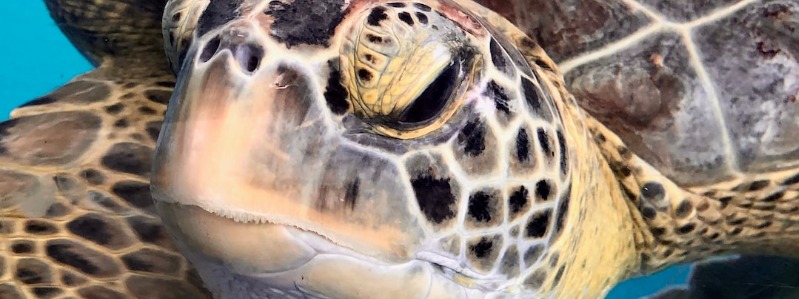Exotic Animals Living in Texas
Contents
- Exotic Animals Living in Texas
- Incredible Creatures of the Lone Star State
Texas is known for various unique wildlife, from armadillos to white-tailed deer. But did you know that Lone Star State also boasts a diverse selection of exotic animals? From majestic birds and giant reptiles to shy marsupials and fuzzy rodents, Texas has an array of intriguing creatures that can be found in public and private settings.
Several species of exotic animals have made their home in Texas over time and now can be found in zoos, nature reserves, and even urban areas across the state.
Incredible Creatures of the Lone Star State
The Lone Star State is full of incredible creatures that make it one of the most diverse states in the country. Home to a wide variety of habitats, from forests to deserts, Texas is home to many unique and fascinating creatures. From armadillos and roadrunners to opossums and bobcats, these native Texan animals have adapted to their environment to survive over time.
Mexican free-tailed bat
The Mexican free-tailed bat is one of these exotic animals native to Texas. Every summer night at dusk, millions of bats fill the skies across central and south Texas as they emerge from area caves or bridges to search for food.
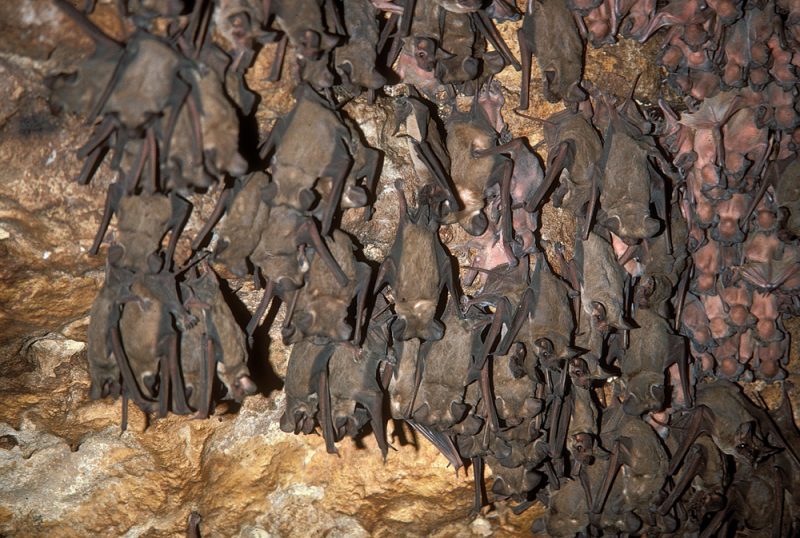
The Mexican free-tailed bat (Tadarida brasiliensis) is an iconic species of the Texas landscape, providing vital benefits to the ecosystem. Found throughout Central and South America and in Texas, these animals are one of the state’s most recognizable animals. With long wings and large ears, Mexican free-tailed bats can be seen flying around at dusk when they leave their roosting spots in search of food. These highly social animals primarily feed on insects such as moths, beetles, and mosquitoes which helps to reduce crop damage from pests.
Mexican free-tailed bats also play an essential role in pollinating many plants, including agave, for tequila production, making them a crucial part of many ecosystems in Texas.
Armadillos
Another exotic animal found in Texas is the Nine-Banded Armadillo, a creature with an armored shell and peculiar behavior which involves jumping straight up into the air when startled! They have also been spotted swimming through bodies of water such as ponds and streams, something very few other mammals can do!
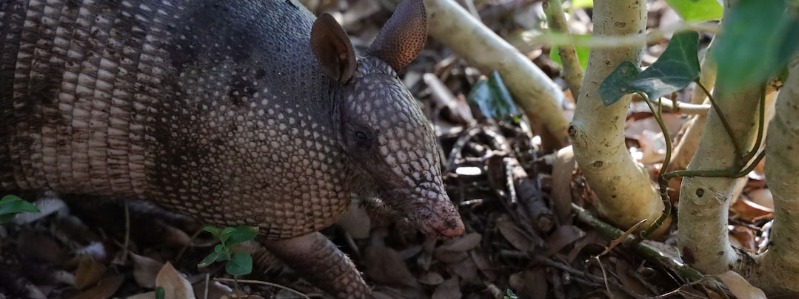
Armadillos, one of the most recognizable animals in Texas, are nocturnal mammals with several adaptions that allow them to thrive in their habitat. Their armored shell protects them from predators while they sleep during the day and hunt for insects at night. Roadrunners are another iconic creature found throughout the state; these birds can run up to 20 miles per hour as they search for prey like lizards or snakes.
Coatis
Coatis are some of the most exciting animals to look out for in Texas. These animals, also known as coatimundis, have a raccoon-like appearance and live throughout various parts of mainland Mexico and South America. In recent years, these creatures have been spotted in many places around Texas and have become an increasingly common sight for residents in the state.
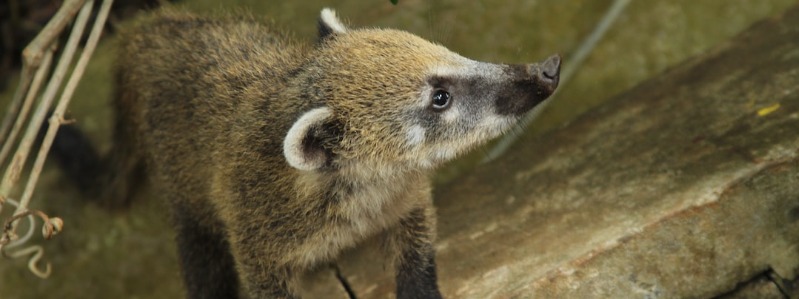
Coatis can grow up to 3 feet long and weigh between 7 and 12 pounds when fully grown. They spend much of their days searching for food, such as insects, lizards, eggs, fruits, and nuts. The overall diet of a coati is very diverse; they’ll eat whatever they can get their hands on! Coatis typically live in groups called “bands” or “clans,” consisting of anywhere from two to twenty individuals.
Pumas
Puma is an animal native to the state of Texas. Also known as cougar, mountain lion, and catamount, pumas are one of the few large predators that still roam in Texas’ diverse ecosystems. They hunt various game species, including deer, javelina, rabbits, rodents, and birds. Although they are considered endangered in most areas of the United States, they have made a comeback recently in Texas, with estimates reaching over 3,000 individuals throughout the state.
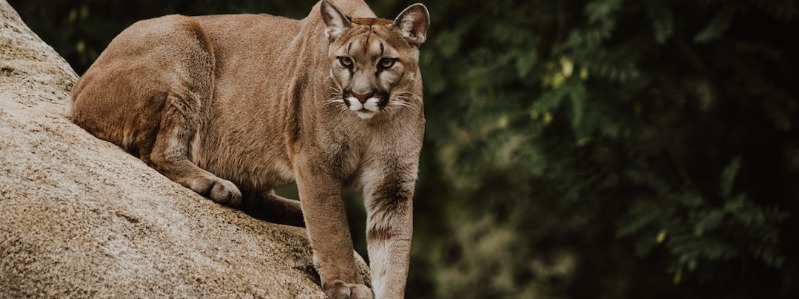
Pumas prefer habitats with plenty of covers, such as dense forests or rocky canyons; however, they can also adapt to many other environments, like grasslands or arid deserts. They use their keen senses to hunt at night and rely on stealth to track down prey.
Jackrabbits
Jackrabbits are a species of hare native to the prairies and deserts of Texas. As their name implies, they are mainly well known for their long hind legs, allowing them to leap quickly over large distances. Jackrabbits are common in many areas of the state and can be found in open fields, grasslands, and woodlands.
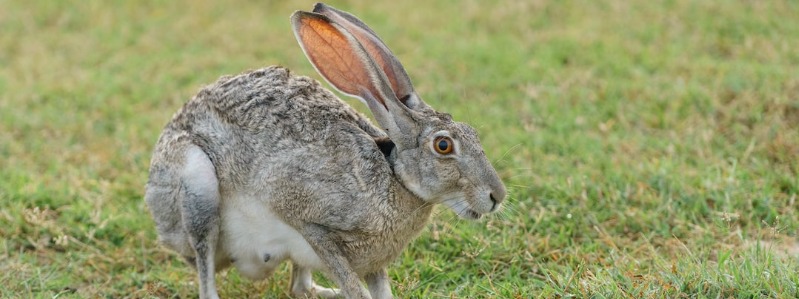
The jackrabbit is an integral part of the Texas ecosystem as it serves as a critical food source for other animals in its habitat, such as hawks, bobcats, foxes, coyotes, and badgers. They also play an essential role in controlling vegetation growth by consuming large amounts of plants. Jackrabbits have adapted to survive harsh desert climates by developing thick fur coats that help protect them from extreme temperatures while providing camouflage from predators.
Jaguars
Jaguars are some of the most magnificent creatures in the Lone Star State. These large cats can be found primarily in south and east Texas, inhabiting dense forests and wetlands. They are a robust species known for their orange-brown fur with distinctive black spots. Local wildlife enthusiasts greatly appreciate the jaguar’s presence since they help regulate the population of other animals.
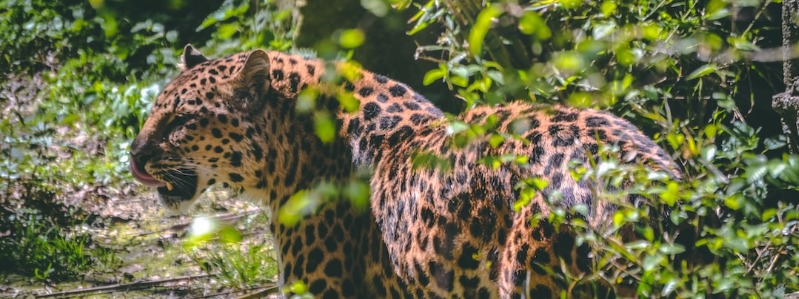
Jaguars weigh up to 200 pounds and typically measure six feet long from nose to tail tip. These graceful animals usually hunt alone at night, preying on deer, wild hogs, armadillos, jackrabbits, birds, and fish. To survive in nature, they depend on the cover of thick vegetation or shadows to camouflage them while stalking their prey.
Ocelots
Ocelots, small wild cats native to the Americas, have been seen in Texas for centuries. These animals of Texas are found predominantly in the south and southwest regions of the state. Ocelots are about twice the size of a domestic cat and can weigh between 8-16 pounds. Their coats consist of yellowish–brown fur with black spots, stripes, and rosettes throughout their body.
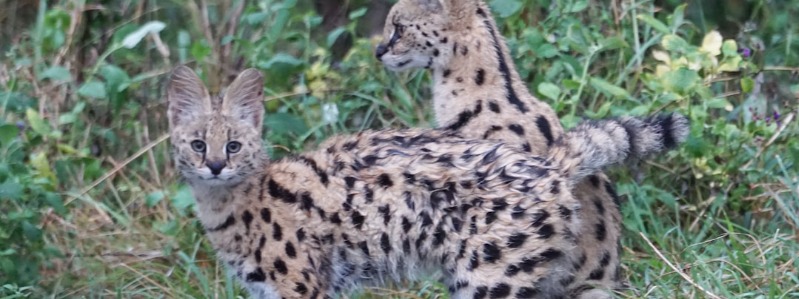
These animals of Texas are nocturnal hunters that prey on rodents, lizards, birds, and other small mammals. They usually hunt alone but are sometimes known to team up to hunt larger prey such as deer or javelina pigs. Ocelots make their dens in hollow trees or brush piles, protecting them from harsh weather conditions while they sleep during the day.
Skinks
Skinks are a type of lizard found in various parts of Texas. They are easily recognized due to their small size and smooth, shiny scales. Skinks are harmless to humans and help control the populations of other small animals, such as insects and spiders, which can become pests. In Texas, there are over 20 species of Skink, including the Great Plains Skink, the Broad-headed Skink, and many more.
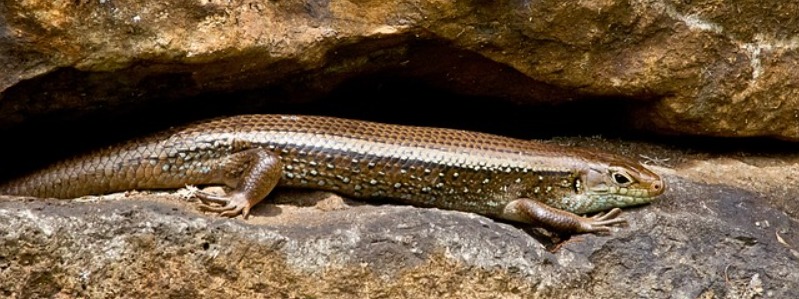
Skinks prefer habitats with plenty of moisture, such as forests or grasslands near streams or ponds, as omnivores eat plants and animals for nutrition, such as insects, worms, fruit, berries, flowers, and leaves. During winter, most species burrow underground or hibernate in logs or stumps until warmer temperatures return in the springtime.
Iguanas
Iguanas are an iconic animal of Texas. Their bright green bodies and curious personalities have made them a favorite amongst residents in the Lone Star State. These lizards can typically be found in warm climates, such as Mexico, South America, and the Caribbean Islands. In Texas, iguanas tend to congregate near rivers and streams. It is not uncommon for Texans to find small groups of these reptiles basking in their backyard or even on nearby trails.
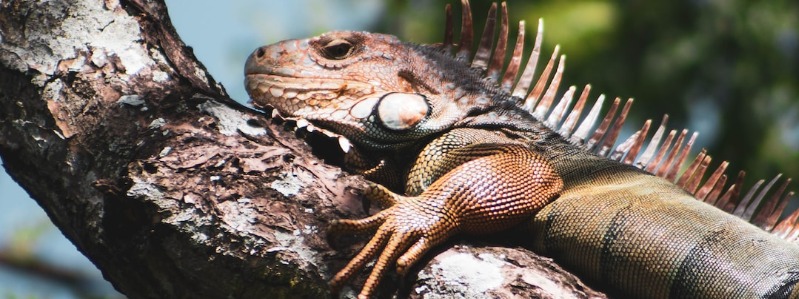
In addition to their unique look, iguanas make interesting pets due to their docile temperament and easy-to-care-for nature. They primarily eat vegetables like carrots and peppers but can also enjoy live insects as treats now and then!
Desert Bighorn Sheep
Desert Bighorn Sheep is a species of wild sheep native to North America. They can be found in the deserts of Texas, where they have become one of the state’s most iconic animals. With a population estimated at over 4,000 individuals, Desert Bighorn Sheep are an essential part of the state’s wildlife diversity and have been recognized for their unique adaptation to the arid environment.
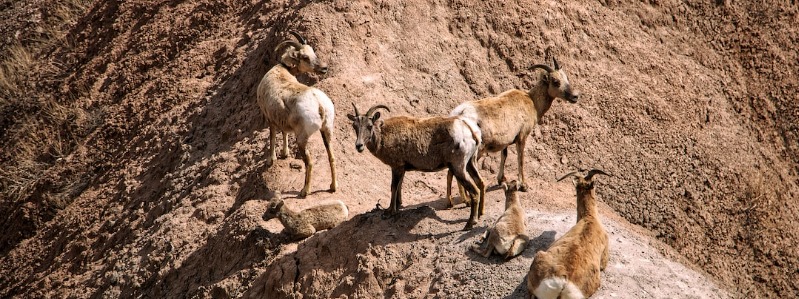
These large mammals typically weigh between 140-240 pounds and stand around two feet tall at shoulder height. They have thick fur coats with lighter colors on their stomachs and necks to help protect them from the intense desert heat. Desert Bighorn Sheep also possess specialized hooves that enable them to grip rocky terrain and climb slopes easily—essential skills for traversing their rugged desert habitats.
Wildlife Sanctuaries in Texas
Wildlife sanctuaries are a great way to observe and appreciate nature in its natural state. Texas is home to some of the most beautiful wildlife sanctuaries in the country, offering visitors an opportunity to explore these scenic locations while learning about the diverse animal species that inhabit them. Texas wildlife sanctuaries have everything from large mammals such as bison and elk to avian creatures like bald eagles and ospreys.
Located throughout the Lone Star State, Texas’s wildlife sanctuaries span a variety of landscapes, including beaches, wetlands, deserts, canyons, and forests. Many of these areas are open year-round for exploration and offer a variety of recreational activities such as hiking trails, bird-watching opportunities, or guided tours.
San Antonio Zoo
The San Antonio Zoo, located in the heart of the Texas Hill Country, is one of the premier wildlife sanctuaries in Texas. Established in 1914, it is home to over 3,500 animals from 750 species and spans 56 acres. Visitors to the zoo will be able to explore exhibits featuring African and South American species and a range of indigenous animal life found throughout Texas.
Highlights include the Albert I. Schwartz Alligator Lagoon, where visitors can observe alligators up close from a bridge above the water; Natural Bridge Wildlife Ranch, which showcases native species such as antelopes, bison, and longhorn cattle; an interactive walk-through aviary with bright plumage birds like parrots and quetzals; plus a carousel and daily shows presented by expert zookeepers that bring learning about animals to life.
Natural Bridge Wildlife Ranch
Located in Natural Bridge Caverns, Natural Bridge Wildlife Ranch is one of the most comprehensive wildlife sanctuaries in Texas. With over 500 acres of lush and diverse landforms – from rolling hills to valleys – this ranch offers a unique opportunity to observe more than 500 species of animals living naturally in their habitats. Here, visitors can explore the ranch’s various ecosystems while safari tours guide them through meadows, woodlands, and wetlands and give them insight into the lives of these fantastic creatures.
At Natural Bridge Wildlife Ranch, guests can get up close with exotic and endangered animals such as zebras, antelope, bison, ostriches, camels, and other African species. A wide range of activities is available for children, including pony rides on gentle ponies or feeding time when they can feed some of the animals directly from their hands!
Endangered Species in Texas
Texas is home to various endangered species, including the Kemp’s ridley sea turtle, whooping crane, and Texas horned lizard. These species are threatened by human activities such as habitat destruction and pollution, making it essential for conservationists to act quickly to preserve these animals. Wildlife sanctuaries have been created throughout the state to support Texas’s endangered species further.
The National Audubon Society manages 14 wildlife sanctuaries across Texas that provide refuge for endangered birds like the golden-cheeked warbler and black-capped vireo. Other covers focus on reptiles and amphibians, like the San Marcos salamander or Barton Springs salamander. Many of these places also offer educational programs so visitors can learn more about local wildlife and how they can help protect them.
Red Wolf
Red wolves, an endangered species native to Texas, have been a source of great interest for environmentalists and conservationists alike. In the 1970s, red wolves were on the brink of extinction in the wild due to hunting and habitat destruction. But thanks to a successful reintroduction program, their population is slowly increasing in eastern Texas.
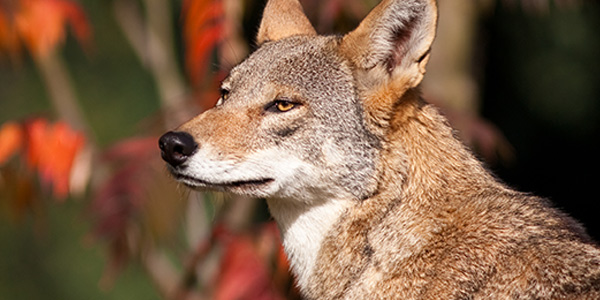
This reintroduction program was established by the U.S. Fish & Wildlife Service (USFWS) in 1987 when they captured five red wolf pups from Louisiana and transported them to North Carolina to save this species from further decline. The success of this project has resulted in over 200 individuals roaming freely through parts of Texas today, making it one of only two locations where these animals can be found in the wild.
Kemp’s Ridley Sea Turtles
Kemp’s Ridley Sea Turtles are an endangered species found in the waters of Texas, and it is the smallest and most endangered sea turtle in the world and is also one of seven sea turtles that call Texas home. Named after Richard Kemp, a fisherman from Key West who first discovered them off the coast of Mexico in 1880, they were once plentiful throughout coastal areas along the Gulf Coast.
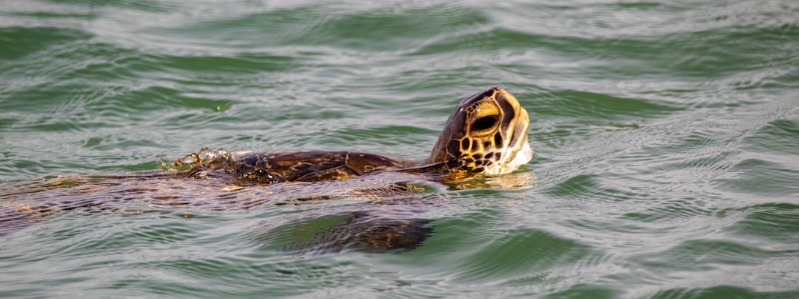
Today, however, their numbers have drastically declined due to human activities such as overfishing, shrimp trawling, and pollution. This has caused Kemp’s Ridley Sea Turtles to become listed on state and federal Endangered Species lists.
Threats to Wild Animals in Texas
The Texas Parks and Wildlife Department has identified 151 species of native wild animals considered threatened or endangered. These include black bears, Mexican gray wolves, whooping cranes, and Kemp’s ridley sea turtles. To ensure the survival of these species, conservation efforts must be taken.
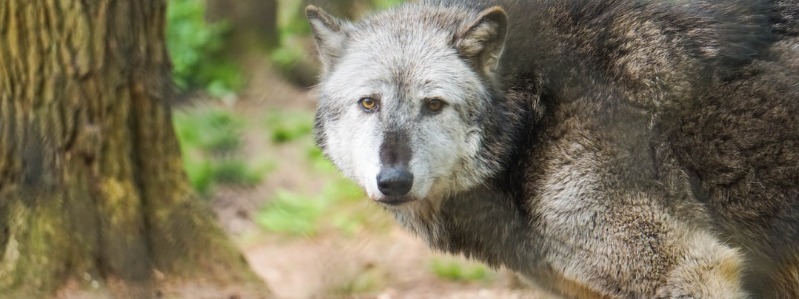
Unfortunately, many of these species are in danger of extinction due to various threats. Wild animals in Texas are threatened by the destruction or degradation of their habitats from urban sprawl and land development. Climate change has also played a role in reducing the populations of some animals by creating extreme weather conditions that make it difficult for them to survive. Furthermore, pollution has adversely affected Texas’ ecosystem, and invasive species compete with wildlife for resources.
In recent years, conservation efforts have been put in place across the state to protect its vulnerable species from becoming endangered or extinct.
The most common threats to wild animals in Texas are habitat destruction due to urbanization, water pollution from agricultural runoff, poaching, illegal hunting activities, and competition from non-native species such as feral hogs and armadillos.
Habitat Loss
Habitat loss is one of Texas’s most pervasive threats to wild animals. With a rapidly growing human population in the state, many species are facing decreased access to food, water, and resources. As natural areas are converted into residential and agricultural land, competition for desired habitat increases among wild animals and the human population.

In some cases, this conversion has resulted in drastic changes to an area’s ecology. For example, the fragmentation of forests due to roads or urban expansion can prevent animals from migrating long distances or moving between habitats during the breeding season. Additionally, when humans move into an animal’s territory, it increases the risk of human-wildlife conflict, which can lead to injury or death for both parties involved.
The rapid increase in development within Texas is seriously affecting native wildlife populations across the state.
Conservation Efforts in Texas
Conservation efforts in Texas are becoming increasingly important as human activity continues to threaten the state’s unique wildlife. With large cities and expansive ranches, humans have taken over much of the once-untouched wilderness, home to many species of animals. To ensure the preservation of Texan wildlife, conservationists and local organizations have stepped up their efforts to conserve what remains.
Texas Parks & Wildlife Department (TPWD) is one organization that has developed an extensive array of initiatives to conserve Texas’ wildlife. They manage more than 500 public hunting areas, operate 17 fish hatcheries throughout the state, and enforce laws prohibiting poaching or harming wildlife. The TPWD also works with private landowners to promote habitat restoration practices across Texas. Additionally, they collaborate with other agencies, such as US Fish and Wildlife Service, to help endangered species recover through recovery plans or captive breeding programs for birds like whooping cranes or Attwater’s prairie chickens.
In recent years, conservation groups such as The Nature Conservancy have been working with local government agencies to protect vulnerable habitats and endangered species through land protection, restoration projects, and public education initiatives. These initiatives aim to help preserve endangered species like the Kemp’s ridley sea turtle or golden-cheeked warbler for future generations. Additionally, state parks are being utilized for research purposes to understand better how particular animal populations will be affected by changes in their habitat.
Reintroduction Programs
Reintroduction programs are an increasingly important tool in the conservation of Texas wildlife. Reintroducing species that have become rare or extinct in certain regions, these programs help to preserve biodiversity and ensure healthy ecosystems for native species. This is particularly important for Texas, where many animals are threatened by habitat loss and climate change.
Reintroduction programs aim to restore balance to a region’s ecosystem by replenishing populations of endangered species. To achieve this, biologists carefully select and introduce individuals from closely related subspecies or other similar habitats, increasing the population’s genetic diversity over time. Reintroduced species may also bring new behaviors that can benefit local ecosystems – such as predator-prey interactions or pollination services – further strengthening their role in conservation efforts.
Where to Spot Rare Species in Texas
From native species to rare and even endangered animals, there are plenty of incredible places to see wildlife in the Lone Star State. Whether a nature enthusiast or a casual observer, here’s where you can spot some of the most unique and unusual animals in Texas.
The vast grasslands and forests of east Texas offer sightings of black bears, wild boars, armadillos, and bald eagles. The Davis Mountains State Park is home to javelinas, bighorn sheep, roadrunners, and other more exotic species like mule deer, elk, pronghorn antelope, and wild turkeys.
Observing Exotic Animals in Texas
For those looking to observe some of Texas’ most elusive wildlife, a guided tour through one of the state’s many reserves or national parks may be just the ticket.
With its diverse terrain and climate, Texas provides refuge for a variety of animals from both temperate and desert regions. A tour guide can provide an educational overview of what lies beneath each habitat – from big cats prowling through grassland areas to birds soaring through rainforest canopies.
Conclusion
Texas is home to a wide array of exotic animals. From pumas and ocelots to Jackrabbits and Mexican free-tailed bats, the Lone Star State provides an exciting and diverse wildlife experience. Whether exploring local hiking trails or going on a guided tour, there are plenty of ways to observe these creatures in their natural habitats. As Texans, we are responsible for respecting the environment and preserving this valuable resource for generations to come.
This article explores the various types of exotic animals living in Texas and discusses the legalities surrounding their ownership.

